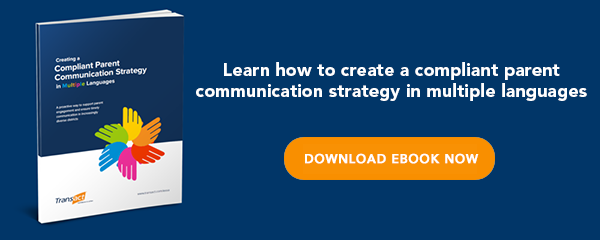Over the years that I have worked with students learning English (English learners or ELs), I have met a number of well-meaning educators and parents that don't understand the difference between English Language Proficiency (ELP) standards and English content standards also know as reading/language arts content standards. For some parents and educators that don't have training or experience working with ELs, the idea that there are two types of English standards is confusing.
So, I (and a number of my colleagues) was glad to see that the U.S Department of Education (USED) recently published guidance that specifically addressed this issue.
Here is the question and corresponding answer from the recent guidance document, "Non-Regulatory Guidance: English Learners and Title III of the Elementary and Secondary Education Act (ESEA), as amended by the Every Student Succeeds Act (ESSA)” :
B-5. What is the difference between English language proficiency standards and content standards in reading/language arts?
Reading/language arts standards are not the same as English language proficiency standards. English language proficiency standards should be specifically developed for students who are ELs and define progressive levels of competence in the acquisition of the English language. English language proficiency standards must be derived from the four language domains of speaking, listening, reading, and writing. (ESEA Section 1111(b)(1)(F)). Reading/language arts standards, on the other hand, describe what all students should know and be able to do in the specific academic content area of reading/language arts.
This does a fairly adequate job of explaining the differences, but putting things in another context may help as well. So, if this is something that you have struggled with, imagine you are a 3rd grade student from the USA that has moved to another country, like Mexico. As a native speaker of English, you attend the local public school where the language of instruction is Spanish. You attend classes entirely taught in Spanish (reading/language arts, math, science, social studies, art, music, etc).
In order to participate in these content areas, you would need to learn how to speak, read, and write Spanish, as well as understand spoken Spanish. This would be equivalent to the language domains of "speaking, listening, reading, and writing" mentioned above in the USED guidance.
Since Spanish is your second language, you need language proficiency in Spanish in order to participate in the content instruction. In order to measure how you are progressing toward learning Spanish, you would also need Spanish language acquisition standards (in addition to academic content standards) for the subjects of instruction.
In other words, the difference between proficiency standards and content standards is that:
- Proficiency standards relate to the ability or proficiency a student has in the language
- Content standards relate to what a student needs to know about the content being taught
For more information on the impact of the Every Student Succeed Act (ESSA) on EL programs across the country, download our ebook. Or, feel free to contact us at 425.977.2100, Option 3 or email at support@transact.com.




